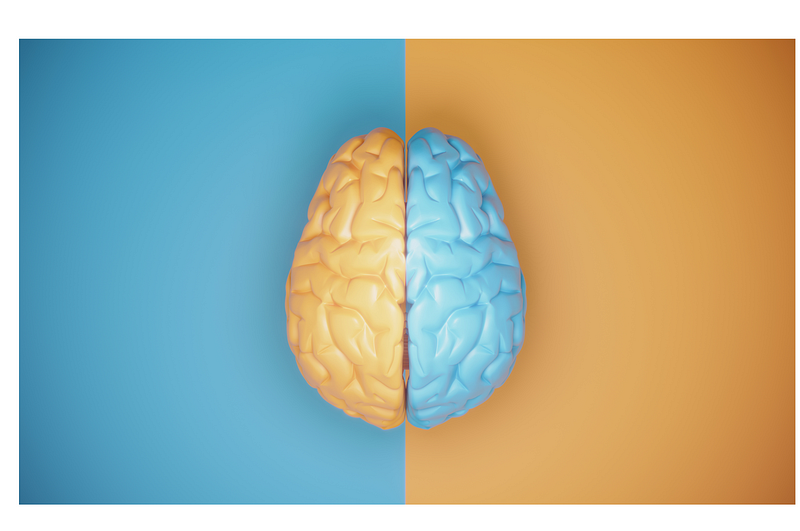Title: Understanding the Myth of Left-Brain vs. Right-Brain Thinking
Written on
Chapter 1: The Persistence of a Myth
The idea that people can be categorized strictly as left-brained or right-brained has long been challenged by modern science. Yet, this division remains deeply ingrained in popular culture.
In a recent conversation with friends about directions to the post office, I received two distinct sets of instructions. Tina advised taking Spencer Street North to Good Hope Road, turning left, and then right at 75th Street, while Debbie suggested a more detailed route involving multiple landmarks. In the past, I might have labeled Tina as analytical (L-brained) and Debbie as creative (R-brained). However, today, I'm inclined to question this simplistic classification.
When did this notion of being L-brained or R-brained emerge? Numerous articles list traits supposedly linked to each side of the brain. The theory posits that those who are analytical and methodical are L-brained, while those who exhibit creativity and artistry are R-brained. Personality tests claiming to determine your brain dominance can be found everywhere. Here’s a typical breakdown of characteristics associated with each type:
Right-Brain Traits
- Creative and spontaneous
- Holistic thinker
- Often disorganized
- Visual learner
- Excels in math and music
- Relies on intuition
Left-Brain Traits
- Logical and systematic
- Highly organized
- Strong memorization skills
- Punctual and detail-oriented
But are individuals truly confined to one category? Many people exhibit traits from both sides. For instance, my neighbor is both imaginative and somewhat chaotic, yet she consistently arrives early to gatherings. Can our brain dominance evolve as we age? If someone learns to play the piano at 40, does that shift their brain's dominance?
Section 1.1: The Origins of the Theory
The concept of divided brain functions originated with neuropsychologist Dr. Roger Sperry in the 1960s. He dedicated his career to studying the brain, which is composed of approximately 100 billion nerve cells and acts as our central control system.
The brain is anatomically split into two hemispheres: the left and the right. These hemispheres are interconnected by the corpus callosum, a network of nerve fibers that allows for communication between the two sides. Generally, the left hemisphere governs the right side of the body, while the right hemisphere manages the left side.

According to proponents of the L-brain/R-brain theory, severing the corpus callosum leads to a lack of communication between the hemispheres, resulting in separate consciousnesses. Dr. Sperry observed this phenomenon in patients who underwent this surgical procedure to alleviate severe seizures. He created experiments that divided visual fields, revealing that each side of the brain could independently process stimuli, leading to distinct conscious experiences.
As Sperry noted, the two hemispheres can operate as separate entities, each with its own sensations and cognitive processes.
Chapter 2: Scientific Rebuttals to the Split-Brain Theory
Recent research is challenging the long-standing belief in a divided brain. Dr. Michael Corballis, a professor at the University of Auckland, addresses these misconceptions in his article "Left-brain, right-brain: Facts and Fantasies" published in PLOS Biology. While he acknowledges that split-brain research has contributed to neuroscience, he argues against the idea that individuals are strictly L-brained or R-brained.
Corballis suggests that while certain brain regions are responsible for specific functions like language and spatial skills, human cognition is more complex. He states, "These centers have to do with how the normal brain processes the world, and not with how people differ from each other." Dominance is related to the task at hand, not the person.
For example, while creativity is often associated with the right brain, language processing is primarily a left-brain function, which also involves nuances and creative interpretation. Interestingly, studies show that a significant percentage of both left- and right-handed individuals utilize their left hemisphere for language.
Corballis emphasizes that people vary in their analytical and emotional capabilities, but this variability does not fit neatly into the left or right categories. Instead, these traits exist on a continuum.
The first video, The left brain vs. right brain myth - Elizabeth Waters, provides insights into the origins of these concepts and their implications in modern psychology.
MRI studies from the University of Utah have also contributed to the discourse on the L-brain/R-brain theory. Researchers analyzed brain scans of over 1,000 participants aged 11 to 29, searching for signs of lateralization—whether certain mental processes favored one hemisphere. Their findings revealed no evidence that individuals consistently prefer one side over the other. Both hemispheres contribute to various tasks, meaning the brain operates as a cohesive unit rather than divided entities.
For example, while language is typically assigned to the left hemisphere, the right hemisphere plays a crucial role in interpreting tone and context. Even in tasks considered to be left-brain dominant, such as math, the right side is engaged in making comparisons and estimations. Ultimately, both sides collaborate, demonstrating that we utilize our entire brain for virtually every activity.
The second video, Left Brain vs Right Brain Myth! DEBUNKED, takes a closer look at the evidence disproving the divided brain theory.
In summary, the notion that individuals are solely creative or analytical is outdated. The idea of a split brain lacks scientific support, even though the L-brain/R-brain theory has persisted for years. While the split-brain theory introduced valuable insights into brain function, it is essential to recognize that all cognitive tasks engage multiple brain networks.
Remember, your brain functions as a unified whole, constantly active and interconnected, rather than being strictly divided into left and right.